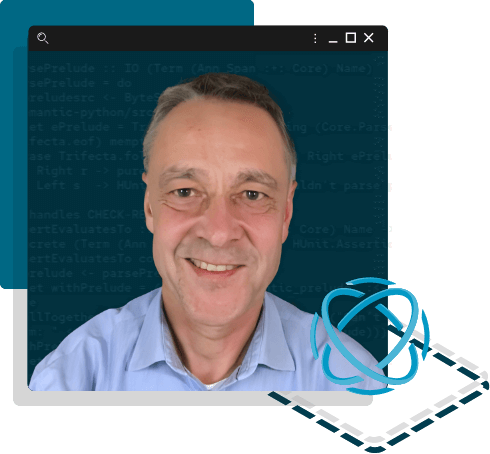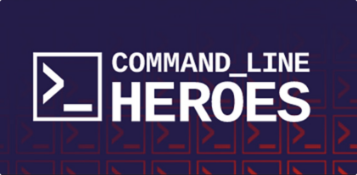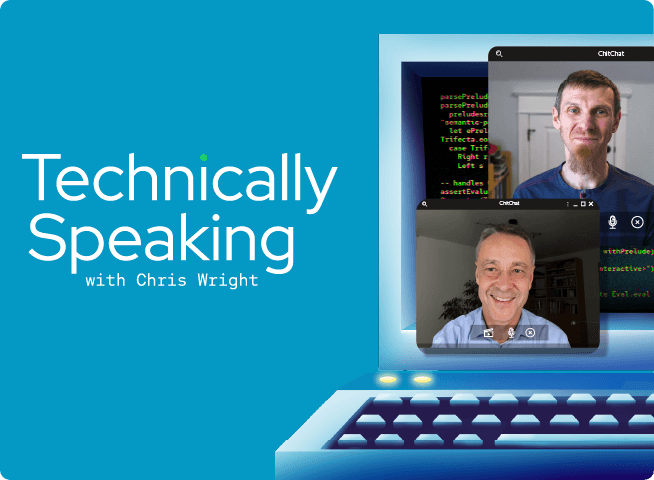A Composable Industrial Edge Platform
Relying on interconnected systems that involve both IT and OT components, from edge devices to sensors on the factory floor, edge computing, IIoT, and new approaches to industrial control systems are creating new challenges, especially in managing and safeguarding enormous amounts of sensitive data. Join us as Red Hat CTO Chris Wright and ABB CTO for Process Automation Bernhard Eschermann take a look at the future of industrial automation using composable industrial edge platforms.
00:01 — Chris Wright
When you hear industrial automation, you might picture machines tirelessly performing actions with clockwork precision. While today's systems excel at repeated tasks in idealized conditions, spherical cows and frictionless plane world, the real world is full of imperfections and variables where unpredictable factors can disrupt operations. So industrial automation is evolving to embrace adaptive processes that can increase efficiency and customization. But what does that actually look like? And will these new approaches help us prepare for the unexpected?
00:37 — INTRO ANIMATION
00:47 — Chris Wright
Whether we adapt machinery in real time to correct imperfections or reconfigure it for entirely new tasks, industrial automation's emphasis is on software-defined data-driven processes. Well, where do you build software on IT platforms? Not on embedded systems where you're soldering circuit boards to do your logic. This is a shift from focusing on the physical world to embracing a digital perspective. And one key concept in this digital transformation is the digital twin. A digital twin represents a virtual copy of a physical object process or system created using data collected from sensors. This virtual model allows engineers, analysts, and decision makers to monitor, analyze, and optimize the performance of the physical entity without disrupting its operations. Control systems for industrial automation are particularly challenging due to the need for real-time performance and reliability in often harsh environments. This requires advanced computing infrastructure, data storage and management systems and cybersecurity protocols to protect sensitive data.
01:59 — Chris Wright
One solution for those needs is smaller footprint container orchestration, which allows for more efficient and effective management of both IT and OT systems. With this in mind, let's talk to someone who is building next generation control systems that tackle these challenges. Bernhard Eschermann, chief Technology Officer of ABB's Industrial Automation Division. Hey, Bernard, how you doing?
02:24 — Bernhard Eschermann
Doing fine. Chris, six hours ahead of you. How about yourself?
02:28 — Chris Wright
I'm doing well. I'm really interested in digging into industrial automation with you. I have to admit, I'm not super fond of the terms ITOT convergence or Industry 4.0. I feel like they're a little bit too buzzwordy or too much hype there, but I know they speak to real changes and real transformations in the industry. So I thought, who better to give us insights than somebody who's steeped in this space of industrial automation? So Bernard, what does it mean to you, this transformation that's happening in industrial automation, and what's your vision for the future here?
03:10 — Bernhard Eschermann
Yeah, interesting question because if you look at our space, obviously we've been using computers, producing data for 30 years, and so this has always been a digital field, but of course it's changing. If we look at what we've done with data so far, it was mainly controlling the process. Now, obviously performance now is becoming more and more available. Communication technology, computer technology evolves further, and that opens the room for not doing these monolithic systems, not like mainframes in the past anymore. You actually have much more option to containerize, microservices and actually separate different parts of the functionality in a flexible way, which helps our customers to do one thing that is very difficult in the old style control systems. That is to actually evolve technology, especially on these outer things that are not directly connected to the control much faster to actually make sure that whatever new technology becomes available becomes also usable for these kinds of tasks, being machine learning, AI, whatever.
04:36 — Chris Wright
I love that you're bringing up microservices and containers. I mean, I can really see where the IT world fits into this OT transformation. Certainly looking at where data is produced, you must have a sense of sometimes it's in the cloud, sometimes it's on prem, it can be generated right at the edge, and having some sort of consistency along with that composable flexibility that you're describing. It sounds really important. Now, I know we're working together between ABB and Red Hat with Red Hat's device edge and microSHIFT, but there's also, you're listening to your customers and getting insights from their needs. How is that informing your view of the evolution of ABBs control systems?
05:24 — Bernhard Eschermann
Yeah, customers obviously want to have very reliable base system that they can fully trust on, but they also want to have modern functionality that uses newest technologies. I guess the combination of the two is the secret that actually builds up the future of the control systems in such a way that you're still ending up with the high reliability, availability, safety, and all of these characteristics that people got used to while actually enabling at the same time, advanced functionality.
06:09 — Chris Wright
I know in this context the data this being generated is something that in the end belongs in many cases, it's to your customer. That reliability and mission-critical nature of critical infrastructure means cybersecurity is really top of mind. It's this critical part of the overall solution and as we decompose and spread across from on-prem to clouds to edge, we're introducing complexity into this picture. So how do you think about security and privacy and the robustness and reliability of these systems in general and the data in particular?
06:54 — Bernhard Eschermann
Well, there's one term that actually describes very well what we have to do, and that's the term zero trust. Because in the future system, we've got all of these different components that need to communicate with each other in a cyber secure way. We can't actually have one firewall that protects everything and that everybody trusts on to protect the whole system and everything behind the firewall is open. We have to have a system where all of the components are authenticated with respect to each other in such a way that things that belong to the system that reasonably should be a part of it, that are properly authenticated, should communicate with each other, but any other component that is not a part of the system should not.
07:51 — Chris Wright
Well, Bernard, I love how you've connected microservices, composability, zero Trust, a lot of really important notions, hybrid of what we think about in the modern IT landscape to this physical world of operational technologies, building discreet products, and even processes. It's really been a helpful view on understanding industrial automation and the evolution of solutions in this space. So thank you very much for your time.
08:26 — Bernhard Eschermann
Thanks a lot, Chris.
08:28 — Chris Wright
As AI, edge and cloud computing continue to reshape industrial automation, it will require a consistent composable platform, stretching from private cloud, on-prem, public cloud, and out to our smallest, most remote footprint. That Platform plus data gives us next generation control systems that help create simulation models, optimize energy consumption, improve yields, do predictive maintenance, or simply match supply and demand needs. This is an example of building a smarter, more sustainable future.
- Keywords:
- Edge,
- Automation
Meet the guest

Bernhard Eschermann
CTO Process Automation
ABB
Keep exploring
Industry 4.0 and OT Transformation
Industry 4.0 digitally transforms control systems from edge to the factory floor using cutting-edge technologies that blur the line between IT and OT.
Read the blogUnlock the power of edge computing
Edge devices face challenges, operating with limited resources. Red Hat Device Edge overcomes constraints with a flexible platform for diverse workloads.
Discover Red Hat Device EdgeMore like this

WebAssembly Breaks Away from the Browser
From the browser to the edge, WebAssembly is making waves. What role will it play in the future of server-side technologies?

Season 8, Episode 2: Robot as Software
Building a physical robot isn’t cheap. Luckily, simulation software is reducing the scrap heap—and bringing down the costs of building robots.

What Can Video Games Teach Us About Edge Computing?
Edge computing could be a boon for areas of the world with poor internet connectivity. But how does it really work, and what are its possible uses and implications?
Share our shows
We are working hard to bring you new stories, ideas, and insights. Reach out to us on social media, use our show hashtags, and follow us for updates and announcements.
Presented by Red Hat
Sharing knowledge has defined Red Hat from the beginning–ever since co-founder Marc Ewing became known as “the helpful guy in the red hat.” Head over to the Red Hat Blog for expert insights and epic stories from the world of enterprise tech.

